Dharahara, also called Bhimsen Tower, a nine-storey tower built in 1832
Photograph: Ian Trower/JAI/Corbis
Only the base of the tower remains after most of it collapsed in the 7.8-magnitude earthquake Photograph: Narendra Shrestha/EPA
The Gaddi Durbar palace, built in 1908, in Dubar Square, which was full of temples and palaces and is a Unesco world heritage site Photograph: Alamy
The Gaddi Durbar is surrounded by collapsed temples after the earthquake reduced some of Kathmandu’s most beautiful architecture to rubble Photograph: Prakash Mathema/AFP/Getty Images
Swayambhunath, seen here in 2010, an ancient religious complex of shrines and temples Photograph: Michele Falzone/JAI/Corbis
A monk walks past the badly damaged monastery and shrines at Swayambhunath Photograph: Navesh Chitrakar/Reuters
Patan Durbar Square, a world heritage site in the Lalitpur district of Nepal, photographed in 2010 Photograph: Narendra Shrestha/EPA
Remains of the temples in Patan Durbar Square reduced to rubble by the earthquake Photograph: Omar Havana/Getty Images
A satellite image shows Kathmandu’s historic centre before the earthquake, left, and after, right Photograph: Airbus Defence And Space/EPA
Basantapur Durbar Square, containing a pillar and statue of Garuda, a Hindu divine character Photograph: Nadeem Khawar/Flickr Vision
The pillar in Basantapur Durbar Square is partially damaged after the earthquake Photograph: Bernat Armangue/AP
Ancient buildings in Basantapur Durbar Square Photograph: Horizon Images/Motion/Alamy
How Basantapur Durbar Square looks now with several buildings collapsed Photograph: NurPhoto/Rex Shutterstock
Satellite before and after images show an area of ground in Kathmandu used as an open air shelter after the earthquake Photograph: Airbus Defence And Space/EPA
The Guardian
Only the base of the tower remains after most of it collapsed in the 7.8-magnitude earthquake Photograph: Narendra Shrestha/EPA
The Gaddi Durbar palace, built in 1908, in Dubar Square, which was full of temples and palaces and is a Unesco world heritage site Photograph: Alamy
The Gaddi Durbar is surrounded by collapsed temples after the earthquake reduced some of Kathmandu’s most beautiful architecture to rubble Photograph: Prakash Mathema/AFP/Getty Images
Swayambhunath, seen here in 2010, an ancient religious complex of shrines and temples Photograph: Michele Falzone/JAI/Corbis
A monk walks past the badly damaged monastery and shrines at Swayambhunath Photograph: Navesh Chitrakar/Reuters
Patan Durbar Square, a world heritage site in the Lalitpur district of Nepal, photographed in 2010 Photograph: Narendra Shrestha/EPA
Remains of the temples in Patan Durbar Square reduced to rubble by the earthquake Photograph: Omar Havana/Getty Images
A satellite image shows Kathmandu’s historic centre before the earthquake, left, and after, right Photograph: Airbus Defence And Space/EPA
Basantapur Durbar Square, containing a pillar and statue of Garuda, a Hindu divine character Photograph: Nadeem Khawar/Flickr Vision
The pillar in Basantapur Durbar Square is partially damaged after the earthquake Photograph: Bernat Armangue/AP
Ancient buildings in Basantapur Durbar Square Photograph: Horizon Images/Motion/Alamy
How Basantapur Durbar Square looks now with several buildings collapsed Photograph: NurPhoto/Rex Shutterstock
Satellite before and after images show an area of ground in Kathmandu used as an open air shelter after the earthquake Photograph: Airbus Defence And Space/EPA
The Guardian
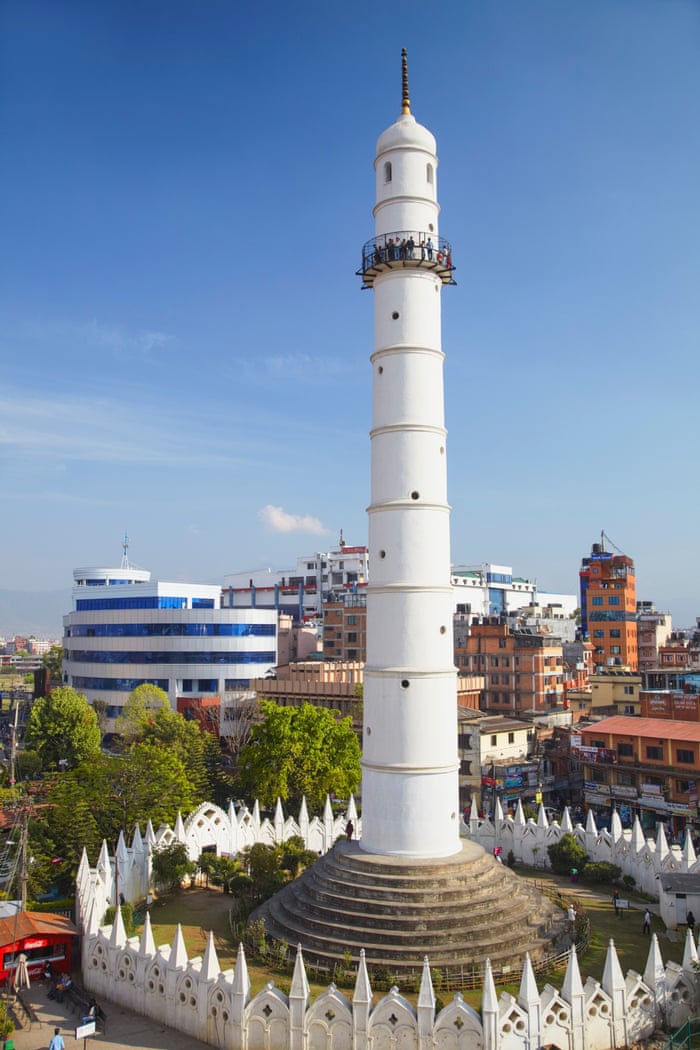
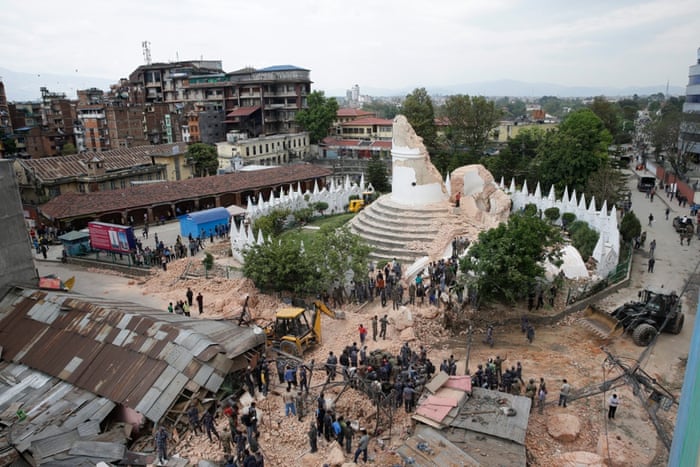
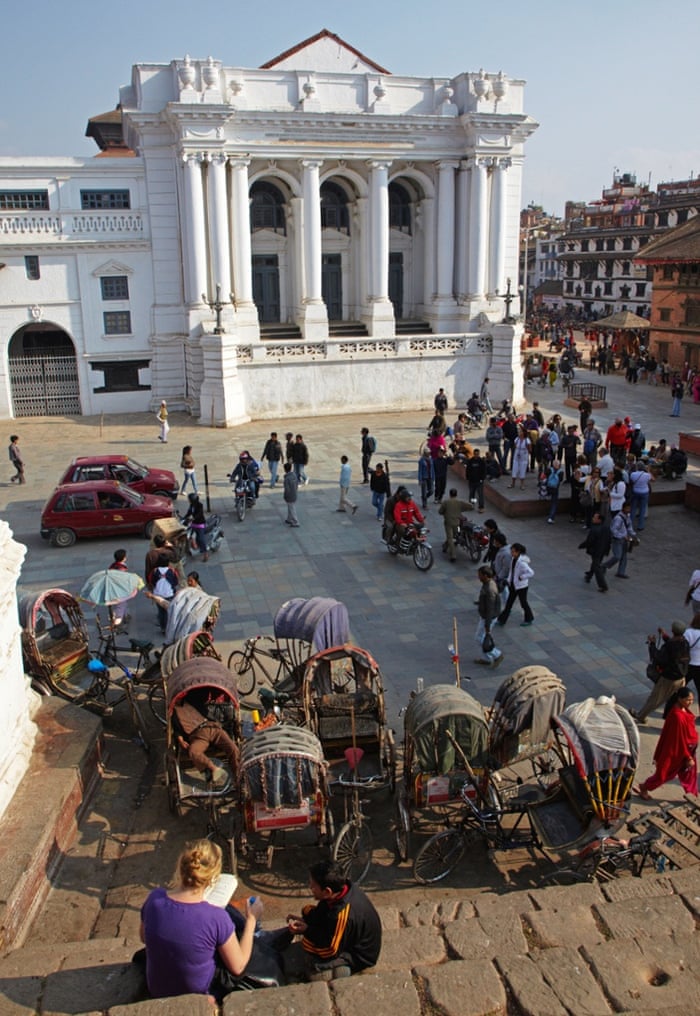
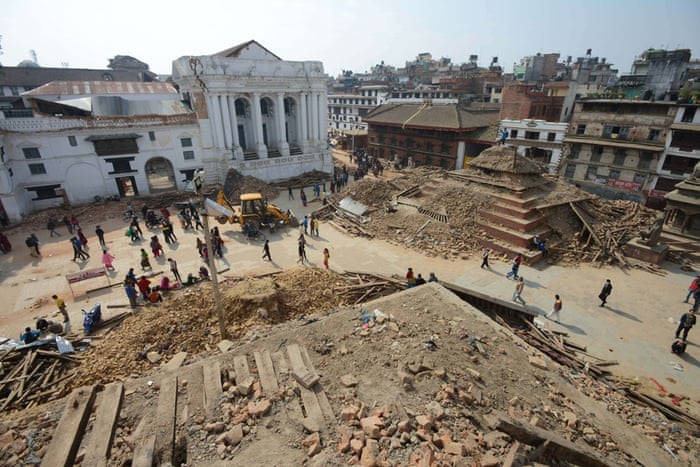
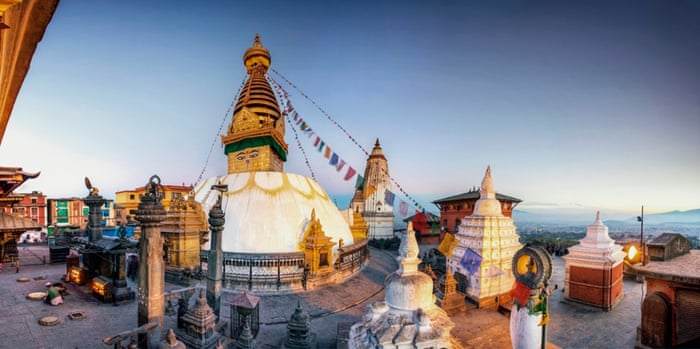
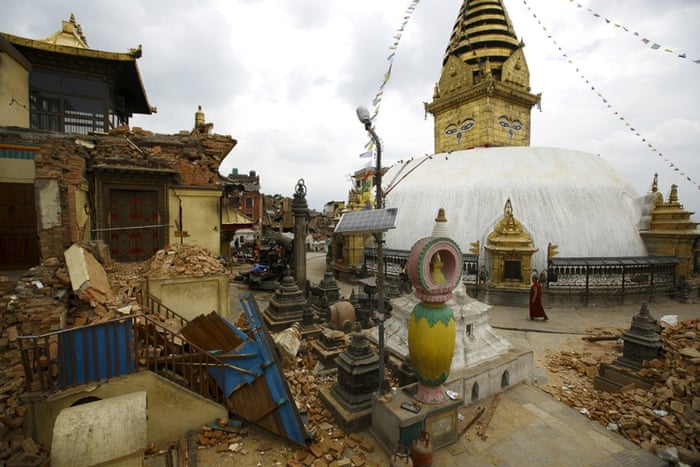
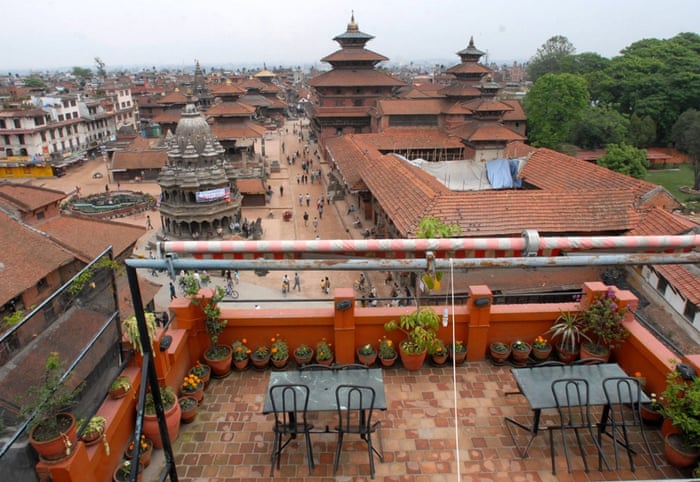
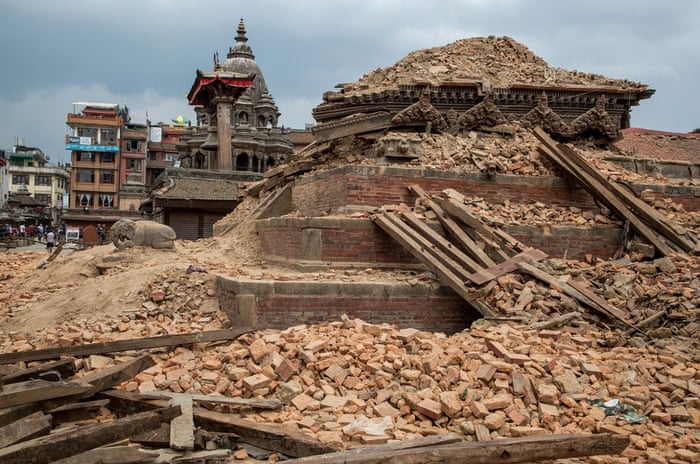
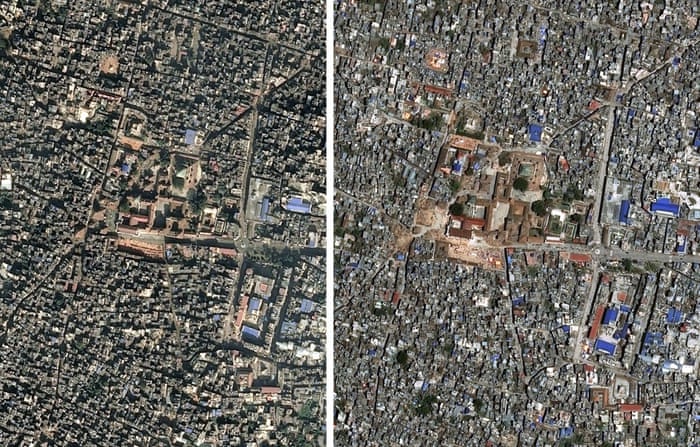
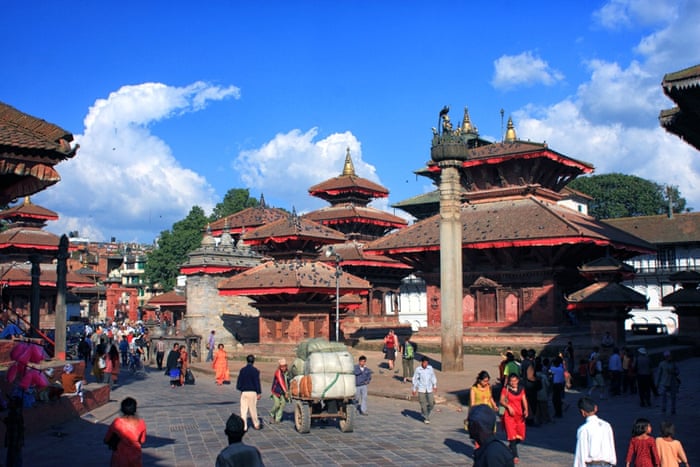
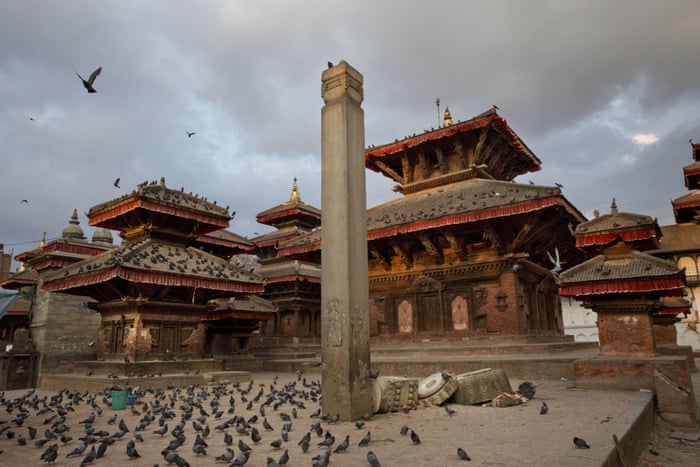

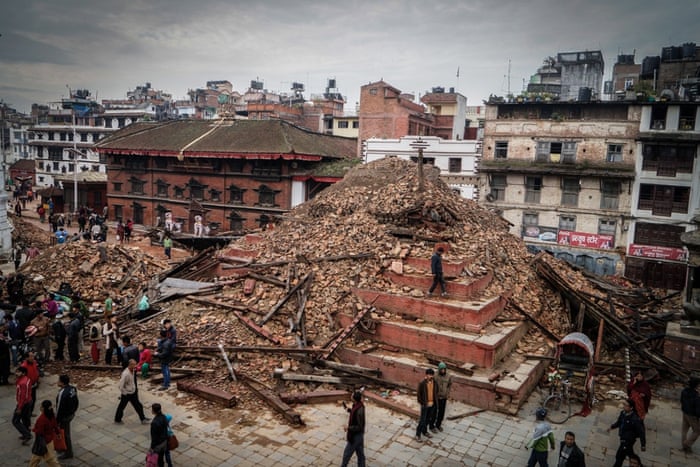
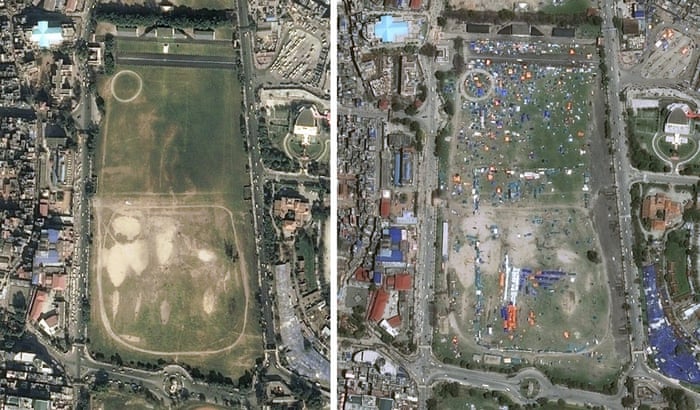
Comments